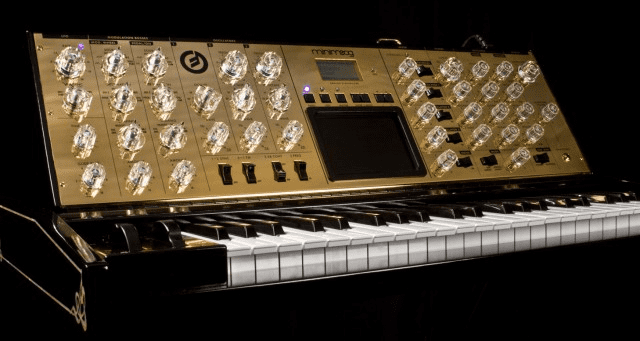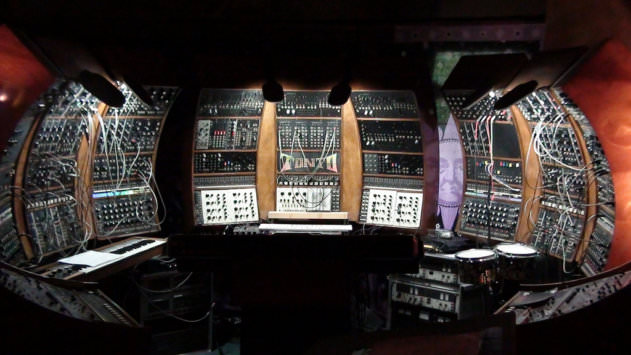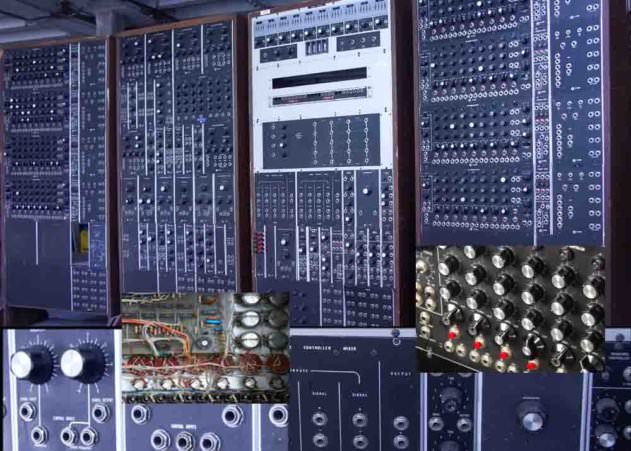TONTO
The most valuable modular synth
Estimated value: £100,000
Modular synths present their own set of difficulties when it comes to valuations. Vintage modular systems from the likes of Moog, EMS, Serge and Buchla command small fortunes on the second-hand market, but if you were to add another few modules, any system would be worth even more. Where do you draw the line? At what point does a group of discrete modules become a whole? What makes a collection of modular gear into a cohesive instrument? The CEMS (Coordinated Electronic Music Studio) Moog modular sold at the Vemia auctions five years ago offers one answer. A giant modular system built by Robert Moog for the State University of New York in 1970, the CEMS sold for £29,950.
But, as valuable as the CEMS is, it’s not the most valuable modular synth in existence. For that, we have to look to TONTO, the modular system built from the late 1960s onward by Robert Margouleff and Malcolm Cecil of British electronic music duo Tonto’s Expanding Head Band, and an instrument which Peter Forrest of the Vemia auctions suggests would become the world’s most expensive modular system if it’s ever put up for sale.
TONTO – The Original New Timbral Orchestra – is a giant modular synth which was initially based on a Moog modular system, then expanded over the course of around a decade with modules and semi-modular synths by ARP, Oberheim, Serge and countless others. Whereas some modular systems might be seen as collections of mismatched modules, TONTO differs. Every unit is calibrated to run on the same control voltages and gate signals for multi-timbral polyphonic control. MIDI control was later added along with digital elements. The huge unit is housed in a semi-circular wooden enclosure, arching back over the heads of those inside it.
Although the Expanding Head Band might not be a household name, the system itself has been heard on a number of hit records thanks to Margouleff and Cecil’s work as session musicians and co-producers in the 1970s. Contributing to Stevie Wonder’s Talking Book, Innervisions, Fulfillingness’ First Finale and Music Of My Mind, the pair helped to encourage the Motown legend’s own interest in synthesisers. Through the late 70s and early 80s in particular, Wonder was virtually guaranteed to be first on the waiting list when any of the synth giants launched a new flagship model. Wonder, alongside artists like Keith Emerson and Herbie Hancock, played a pivotal role in introducing the sounds of electronic instruments as mainstays of popular music. It’s a process which was surely inevitable, but the sounds of TONTO on those early 70s albums may very well have accelerated the speed at which it took place. As such, this is a modular synth with serious provenance.
Cecil bought Margouleff’s share of TONTO in 1975 and the synth is still intact, currently residing in a studio in upstate New York. Peter Forrest describes TONTO as “the biggest and best synth in the world” and suggests that, if it were ever sold, it would be worth “six figures – definitely in dollars, probably in euros, possibly in pounds”. However, he also adds one crucial caveat, pointing out that the value of TONTO is inherently linked to the fact that it’s been designed as such a cohesive instrument: “The most important thing with TONTO is that it shouldn’t be broken up when it’s sold! It should be kept as a working unit.”



07.09 AM
Fantastically thorough look into the value behind mouth-watering gearporn. Now time to start saving… ;-(
01.26 PM
Didn’t herbie hancock demo that Fairlight sampler on Sesame Street
01.30 PM
He certainly did, alongside a young Tatyana Ali (Ashley from The Fresh Prince Of Bel Air): http://www.youtube.com/watch?v=oKoisNv1ftw
This video of him showing it off to Quincy Jones is also excellent: http://www.youtube.com/watch?v=n6QsusDS_8A
02.35 PM
no Waldorf Wave?!
02.44 PM
The Wave’s definitely right up there with the best of them.
It’d be great to hear all your thoughts on this from a practical perspective too. As amazing as, say, a CS-80 is, would it necessarily be at the top of your shopping list if you won the lottery? We’ve got a feeling a lot of producers are probably more interested in slightly more affordable classics when it comes to actually making music…
12.09 PM
What about the GX1?
05.01 PM
I enjoyed this article as I continue to with Attack’s interviews and insightful cultural articles..
In addition to the vintage/analogue gear, I’d add some modern controllers to the list which have huge expressive capabilities not available on the mass market, such as polyphonic pitchbend and sensing on multiple axes. For example, the Haken Continuum is US$5,290 (without its case or stand). The newly-introduced ROLI Seaboard Grand is US$8,888.88. Those are the prices of decent used cars.
The CS-80 is an curious example of how performance controllers have regressed in some ways in the decades to come. How it takes something like an Arturia Origin (itself US$3,000) to include all those kinds of controllers. Not as much of a price delta change as you’d expect, given progress with home computers.
While some contemporary tech like touchscreens thrive (tablet market demand, thanks iPads!) and the DJ market has seen interesting plays (Maschine’s rise despite doubters re: the Akai dynasty), more specialized-to-music stuff languishes or is still available at very high prices. I figure there needs to be more popular education for new instruments to resolve part of this chicken-and-egg Gordian knot — otherwise most people, clinging onto the familiar piano form, are too scared to transition to it, keeping prices high.
02.44 PM
Great point, Torley. Things like the Continuum and Seaboard are very niche products, but to a certain type of performer or musician they’re truly desirable – partly because there aren’t many alternatives at any price point.
But you also hit on another interesting point. The touchscreen revolution led by the iPad virtually destroyed another product – JazzMutant’s Lemur controller, which eventually returned, slightly ironically, as an iOS app. And that trend for premium products to be replaced by cheaper alternatives is definitely mirrored in other markets – Maschine undercutting the MPCs, Moog introducing the Sub Phatty and dropping the Little Phatty, and so on (that’s without mentioning software, of course).
There really aren’t actually many super high-end synths around any more. There are products like the Prophet 12, SE CODE, Voyager XL, etc, but while the market for budget (<£500) and mid-range (£500-1000) synths seems to be thriving, anything larger is a much riskier proposition for any company.
Dave Smith acknowledged in our interview that the numbers today are much smaller, and that's despite the fact that synths are much cheaper in real terms than they were back in the 70s. Even with today's advances, the question of whether the market for a truly expressive, powerful performance-based synth in the vein of the CS-80 would still exist is open to debate.
03.17 PM
No GXs? No paper face Serge or Music Easel ? No Wave? No Fenix? And no Synthi 100?
12.54 PM
EMS?
05.01 AM
Wow! My CS-80’s “Slave to the Bass” video is posted here. (Blushes). It is a magnificent instrument. I used to sit in front of PBS Cosmos with Carl Sagan for a mind melding experience in the early 80’s after school. Our console TV had a good 6×9 speaker. Never expected to find a CS-80 of my own. I do not believe 2000 were ever made. So far, all functional CS-80’s are between serial numbers 1000-1800. It is believed that less than 800 were made. Cost prohibitive. There are 45 circuit boards, stuffed to the gills. Over 1200 internal trim pots to calibrate.
08.05 PM
https://www.youtube.com/watch?v=5esV1RiIB8o